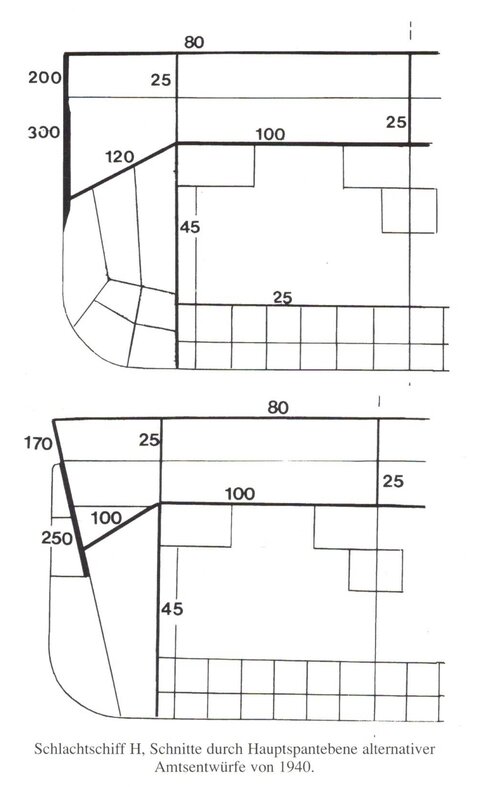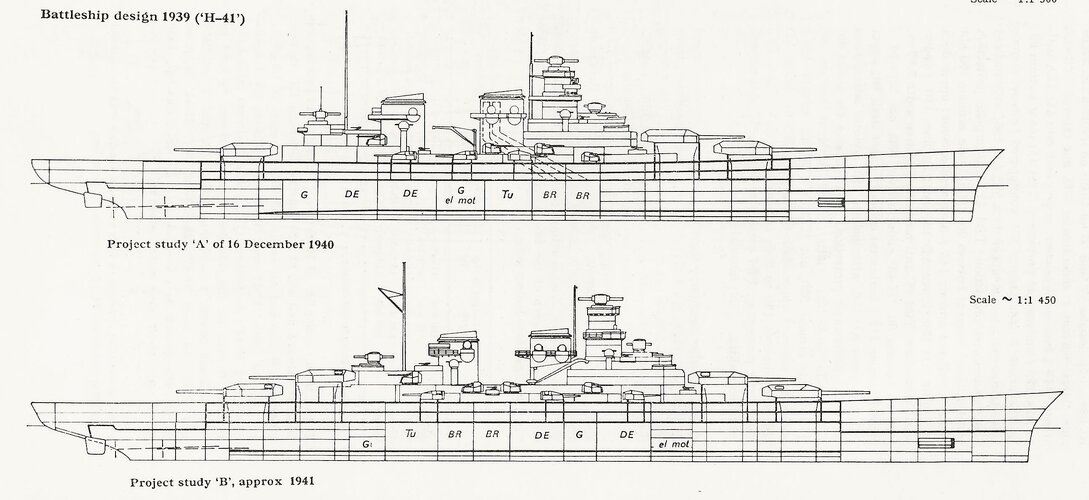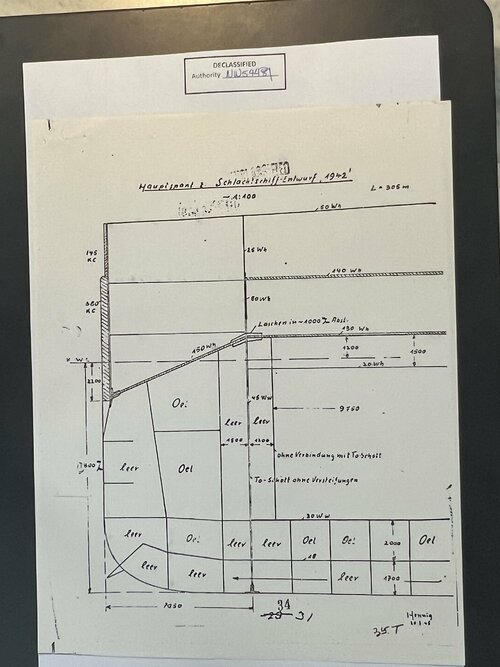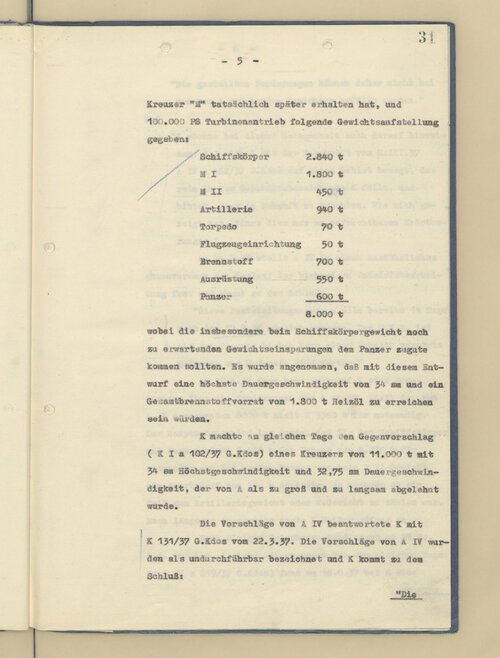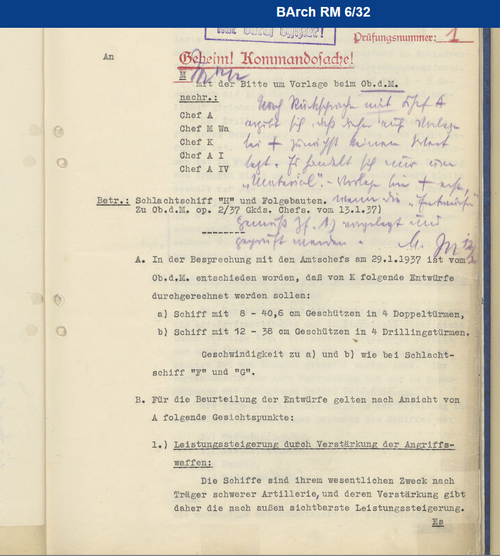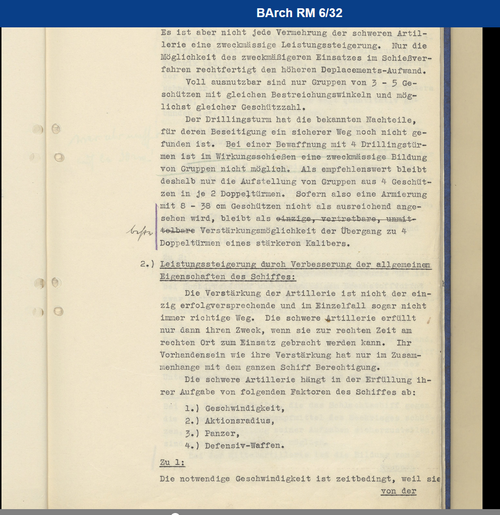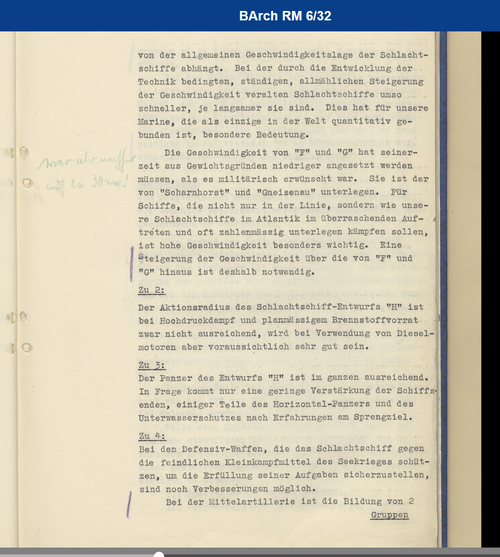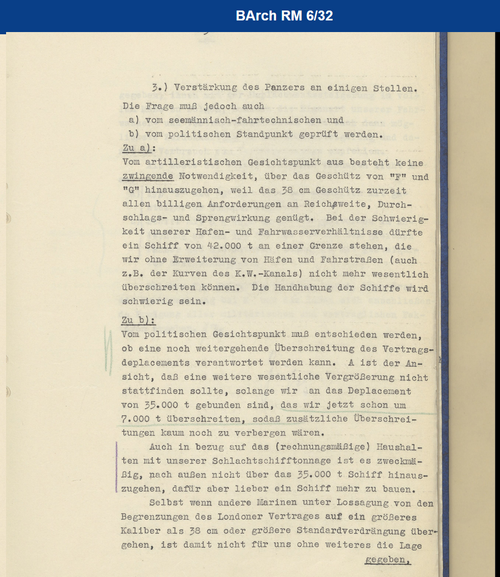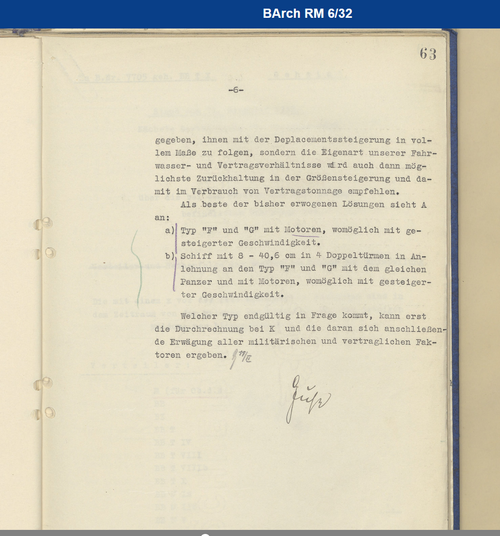- Joined
- 1 February 2011
- Messages
- 2,933
- Reaction score
- 3,611
In the H plans there are a 3 and 4 turreted H-39 designs (called Entwurf II and III )
the Entwurf III was not the final H 39 as it had mixed steam turbines and diesel power plant ( COSAD ) 4 shafts and 175.000shp rather 165.000 full diesel and 3 shafts. Also there are one and two funnelled versions.
And there is a reworked H-40 from 1942 with the same aspects but much larger hull (I call this H 42 Entwurf I )
288m long wl, 79.000tons standard and only 4x2 40,6cm, armour unknown.
the Entwurf III was not the final H 39 as it had mixed steam turbines and diesel power plant ( COSAD ) 4 shafts and 175.000shp rather 165.000 full diesel and 3 shafts. Also there are one and two funnelled versions.
And there is a reworked H-40 from 1942 with the same aspects but much larger hull (I call this H 42 Entwurf I )
288m long wl, 79.000tons standard and only 4x2 40,6cm, armour unknown.

